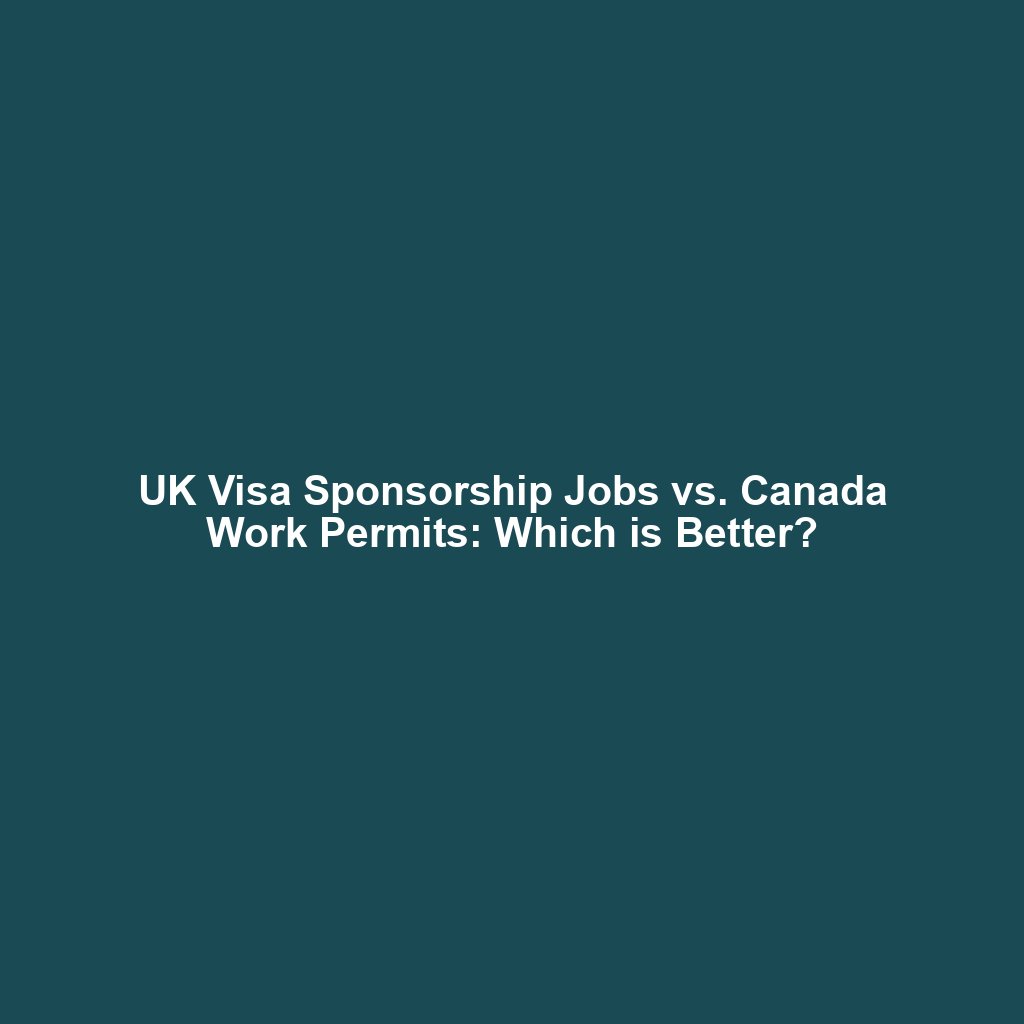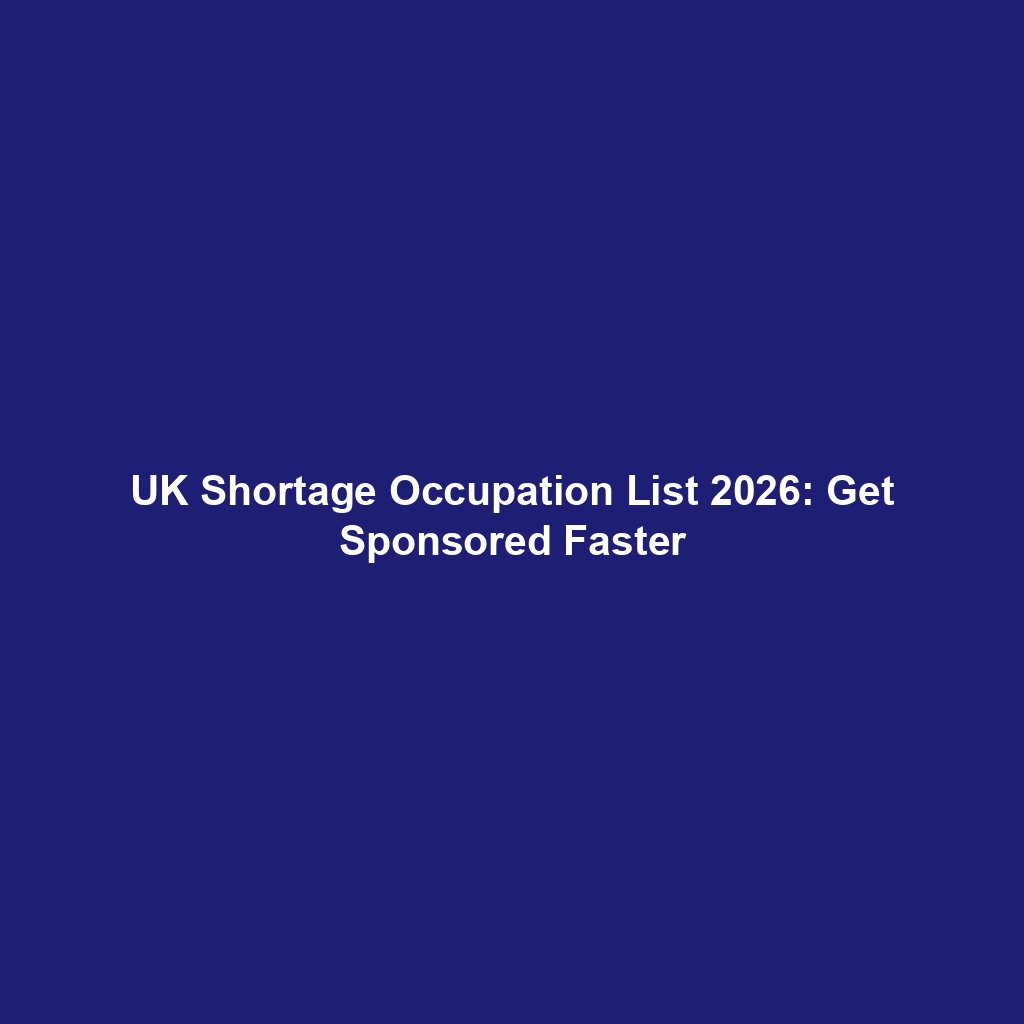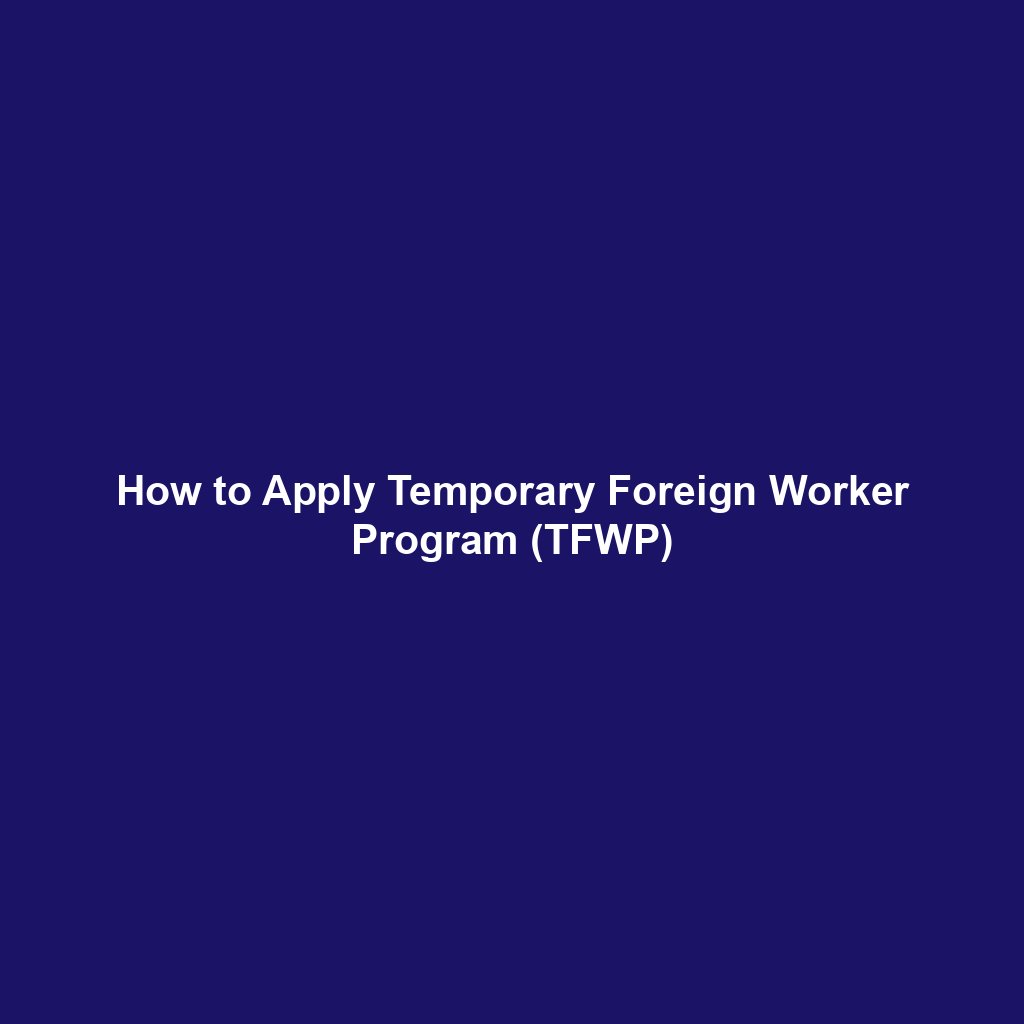Debating between UK visa sponsorship jobs and Canadian work permits in 2026? Explore key differences, immigration pathways, job prospects, salaries, and which country offers better opportunities for foreign workers.
As more people across the globe search for better job opportunities abroad, the UK and Canada remain two of the most popular destinations for immigrants in 2026. Both countries offer legal work routes for foreign nationals—but their systems, requirements, and benefits differ significantly.
The UK has a wide range of visa sponsorship jobs, especially in health care, construction, and tech sectors. On the other hand, Canada provides several work permit pathways, including employer-sponsored and open work permits, under its immigration-friendly policies.
If you’re considering relocating for work but unsure whether to choose the UK or Canada, this in-depth comparison will guide you. We’ll break down the application processes, job market trends, salary expectations, permanent residency options, and help you decide which country offers the better opportunity for your career and life goals in 2026.
Key Highlights
- 🇬🇧 UK relies on employer sponsorship under the Skilled Worker Visa route.
- 🇨🇦 Canada offers both open and employer-specific work permits.
- 💰 Both countries offer competitive salaries but cost of living varies.
- 📈 Canada generally has more immigration pathways to permanent residency.
- 🏥 UK visa jobs are mostly in healthcare, while Canada spreads across agriculture, logistics, trades, and tech.
UK Visa Sponsorship Jobs in 2026
In the UK, foreign workers must be sponsored by a licensed employer to obtain a Skilled Worker Visa. This visa replaced the Tier 2 (General) visa and remains the most common route for immigrants seeking employment.
Key Features
- Employer sponsorship required
- Job must be on the Skilled Occupations List
- Minimum salary threshold of £26,200/year (or £10.75/hour)
- English language proficiency (IELTS or equivalent)
- Visa validity: Up to 5 years (renewable)
- Pathway to permanent residency (ILR) after 5 years
In-Demand Visa Sponsorship Jobs
- Nurses and healthcare assistants
- Carers and support workers
- Software engineers
- Bricklayers and construction workers
- Chefs and hospitality staff
📍 Explore jobs: UK Government’s Skilled Worker List
📍 Apply via: NHS Careers, Find a Job UK
Pros
- Fast-tracked health and care worker visa
- High job availability in healthcare and education
- Option to bring dependents
- Access to NHS healthcare and public services
Cons
- Strict eligibility requirements
- Sponsorship is job-specific; change requires re-application
- High visa fees and Immigration Health Surcharge (IHS)
Canada Work Permits in 2026
Canada offers a variety of work permits under two major categories:
- Employer-specific work permits (tied to one employer)
- Open work permits (flexibility to work for any employer)
These permits are issued under the Temporary Foreign Worker Program (TFWP) and International Mobility Program (IMP). Many workers also transition to permanent residency via the Express Entry, Provincial Nominee Program (PNP), or the Atlantic Immigration Program (AIP).
Key Features
- Employer sponsorship optional for open work permits
- LMIA (Labour Market Impact Assessment) may be required
- Valid for 1–3 years depending on the program
- Multiple pathways to PR
- Accessible to skilled and unskilled workers
In-Demand Work Permit Jobs
- Farm and seasonal agriculture workers
- Truck drivers and delivery drivers
- Warehouse and logistics workers
- Food service and housekeeping staff
- Construction labourers
📍 Apply through: Job Bank Canada, Canada IRCC
Pros
- Easier transition to permanent residency
- Open work permits for spouses of skilled workers and students
- No IELTS required in some cases
- Access to public healthcare in most provinces
Cons
- Processing times may vary by country
- Certain jobs require LMIA approval
- Jobs in remote areas may require relocation flexibility
Application Process: UK vs. Canada
| Step | UK Visa Sponsorship Jobs | Canada Work Permits |
|---|---|---|
| Job Offer | Mandatory from licensed sponsor | Required for employer-specific permits; optional for open permits |
| LMIA Equivalent | No (but employer must be approved sponsor) | Yes, for many roles under TFWP |
| English Language | Required (IELTS minimum CEFR B1) | Depends on permit type; often not mandatory |
| Proof of Funds | Sometimes required for dependents | Required if applying for PR later |
| Application Fee | £719 to £1,500 + IHS | CAD $155 to $255 (varies by permit type) |
| Dependent Eligibility | Yes | Yes |
| PR Pathway | After 5 years (ILR) | Multiple PR options after 1 year or more |
Salary & Cost of Living Comparison
| Factor | UK (Average) | Canada (Average) |
|---|---|---|
| Minimum Wage | £11.44/hour (2026) | CAD $17/hour (2026 estimate) |
| Monthly Rent (1-bed city centre) | £900 – £1,300 | CAD $1,200 – $1,700 |
| Health Insurance | NHS (free with IHS payment) | Public healthcare (free in most provinces) |
| Transportation | £80/month (London) | CAD $100/month (Toronto) |
| Childcare | £700 – £1,200/month | CAD $800 – $1,400/month |
Note: Salaries may be higher in the UK, but so is the cost of living—especially in London and southeast England. Canada offers a slightly more affordable quality of life in most provinces.
Which Is Better for You in 2026?
The answer depends on your career goals, qualifications, and long-term plans. Here’s a breakdown based on different situations:
Choose UK if:
- You are in healthcare, IT, or construction
- You prefer a quicker job placement with an active sponsor
- You’re aiming for permanent residency after 5 years of consistent work
- You don’t mind staying with a single employer initially
Choose Canada if:
- You are looking for multiple immigration pathways (PR faster)
- You want job flexibility with open work permits
- You work in unskilled sectors like farming, driving, logistics
- You’re planning to settle permanently with family
Conclusion: Final Verdict
Both the UK and Canada offer exciting work opportunities for immigrants in 2026, but they cater to slightly different needs. The UK’s visa sponsorship route suits skilled professionals, especially in high-demand areas like healthcare and construction. Meanwhile, Canada opens its doors to a wider pool—including unskilled workers—through flexible work permits and family-friendly immigration policies.
If your goal is to immigrate long-term, secure a job quickly, and enjoy a high standard of living—Canada might be your better bet. However, if you’re a qualified nurse, software engineer, or builder looking to gain international work experience with clear structure, the UK might offer faster entry.
👉 Your future begins with the first application—explore both and choose what aligns best with your career goals.
FAQs
1. Which is easier to get—UK visa or Canada work permit in 2026?
Canada generally has more flexible programs and more opportunities for unskilled workers. The UK requires employer sponsorship and may have stricter eligibility rules.
2. Can I apply for both at the same time?
Yes, you can apply for jobs in both countries, but you’ll need to commit to one if a visa is approved.
3. Does Canada pay better than the UK?
Salaries in the UK may be higher in certain sectors, but Canada offers better cost of living value overall. It depends on your profession and lifestyle.
4. Can I bring my family with either visa or permit?
Yes, both countries allow dependents. Canada often provides open work permits for spouses and school access for children.
5. Which country gives permanent residency faster?
Canada offers more direct and faster PR pathways, especially under Express Entry or Provincial Nominee Programs. UK PR (ILR) requires 5 years of continuous residence.






